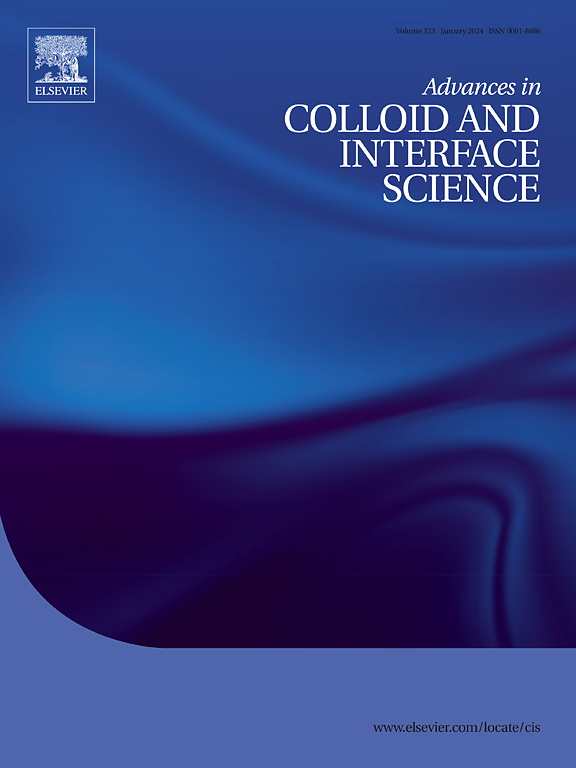The electrodeposition of particle-metal matrix composite coatings to meet tribological and corrosion challenges
IF 19.3
1区 化学
Q1 CHEMISTRY, PHYSICAL
引用次数: 0
Abstract
Incorporation of dispersed particles in an electrodeposit can achieve a diverse range of composite coatings for engineering applications. Anodic or cathodic coatings can be applied via anodising, electroplating and electrophoresis while the included particles can be metallic, polymeric, ceramic, composites or mixtures. This review mainly considers electrodeposited metal matrix coatings. This sub-discipline of electrochemistry and surface finishing can be traced back to Ni-graphite lubricated automotive cylinder engine coatings in the 1920s, followed by developments in the 1960s to 1980s. Recently, particular emphasis has been placed on nanostructured particles to improve deposit properties for applications involving superhydrophilicity, solid state lubrication and in-situ diagnostics. The use of pulsed current, ultrasonic agitation, mixed particles and ionic liquid baths has become more common. The field of composite electrodeposition continues to present many challenges to meet increasing demands for economic coatings, applicable on a workpiece area from mm2 to m2, which are able to withstand arduous in-service conditions. The careful integration of colloid science, electrokinetics and control of operational parameters is critical to achieve a stable suspension of particles in the bath to realise a composite coating having tailored composition, morphology, phase composition, structure and engineering properties. A detailed overview of the reaction environment during electrodeposition, the fundamentals and mechanisms of composite electrodeposition and the influence of process parameters on the final properties of the composite electrodeposits is provided. Important developments in the fabrication of wear- and corrosion-resistant composite films together with applications of composite coatings are outlined.

电沉积颗粒-金属基复合涂层,以满足摩擦学和腐蚀的挑战
在电沉积中加入分散的颗粒可以实现各种工程应用的复合涂层。阳极或阴极涂层可以通过阳极氧化、电镀和电泳来应用,而所包含的颗粒可以是金属、聚合物、陶瓷、复合材料或混合物。本文主要综述了电沉积金属基涂层。这一电化学和表面处理的分支学科可以追溯到20世纪20年代的镍石墨润滑汽车汽缸发动机涂层,随后在20世纪60年代至80年代得到发展。最近,纳米结构颗粒在超亲水性、固态润滑和原位诊断等方面的应用得到了特别的重视。脉冲电流、超声波搅拌、混合粒子和离子液体浴的使用已经变得越来越普遍。复合电沉积领域继续面临许多挑战,以满足对经济涂层日益增长的需求,适用于从mm2到m2的工件面积,能够承受恶劣的使用条件。胶体科学、电动力学和操作参数控制的精心整合对于实现浴液中颗粒的稳定悬浮至关重要,从而实现具有定制成分、形态、相组成、结构和工程性能的复合涂层。详细介绍了电沉积过程中的反应环境、复合电沉积的基本原理和机理以及工艺参数对复合电沉积最终性能的影响。概述了耐磨损和耐腐蚀复合膜制备的重要进展以及复合涂层的应用。
本文章由计算机程序翻译,如有差异,请以英文原文为准。
求助全文
约1分钟内获得全文
求助全文
来源期刊
CiteScore
28.50
自引率
2.60%
发文量
175
审稿时长
31 days
期刊介绍:
"Advances in Colloid and Interface Science" is an international journal that focuses on experimental and theoretical developments in interfacial and colloidal phenomena. The journal covers a wide range of disciplines including biology, chemistry, physics, and technology.
The journal accepts review articles on any topic within the scope of colloid and interface science. These articles should provide an in-depth analysis of the subject matter, offering a critical review of the current state of the field. The author's informed opinion on the topic should also be included. The manuscript should compare and contrast ideas found in the reviewed literature and address the limitations of these ideas.
Typically, the articles published in this journal are written by recognized experts in the field.

 求助内容:
求助内容: 应助结果提醒方式:
应助结果提醒方式:


